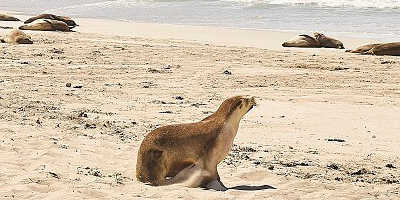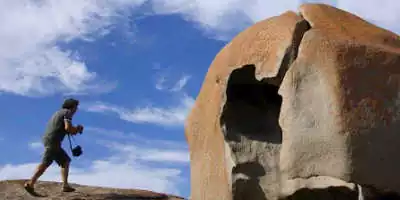What is the difference between a Kangaroo and a Wallaby?
Written by: Cameron Ward
Published: 12/06/2019
Reading time: 3 mins
They may hold a lot of similarities, but a wallaby is more than just a small kangaroo!
For years people have wondered, what is the difference between a kangaroo and a wallaby? Well, wonder no more, we’ll tell you exactly how to differentiate these marsupial cousins.
Both kangaroos and wallabies are marsupials, meaning they carry their young around in a pouch and are similar enough that scientists have placed them in the same order, family, and subfamily. There are a few easy ways to tell the difference between the two animals though.
-
Size
The most obvious distinction between the two animals is their size. Kangaroos are much larger than wallabies and can grow as tall as 2metres and weight over 90kg. Wallabies, on the other hand, are lucky to weigh more than 20kg and rarely reach heights of 1m. Though there are many species of wallaby and kangaroo that vary in size, this is a good rule of thumb to use when determining what animal you’re looking at.
-
Body shape
Kangaroos have a larger amount of height between their knees and ankles, making their legs seem disproportionately sized for their body. Their legs are built to speedily carry them across large open terrains. Wallaby, however, have compact legs, built for agility when moving across forest floors or rocky escarpments.
-
Colour
Wallabies have much more ornate fur than kangaroos. Kangaroos are likely to have a uniform coat of a muted colour, such as brown or grey. Wallaby, however, are likely to have two or three colours on their coat. Some wallaby species are even distinguishable based on their ornate coats.
-
Teeth
Okay, so we know you’re not about to ask the marsupial you’re looking at to open its mouth so you can inspect its molars, however, teeth are a key distinguishing feature for the two animals. In fact, scientists use teeth to help identify fossils. Wallaby have flat teeth, used to grind up leaves it finds in its forest habitat. Kangaroo, however, live mostly off grasses and have curved teeth that help to slice stalks of grass in their mouth.
-
Age
Wallaby typically have a much shorter lifespan than kangaroo, living on average between 11 and 14 years. Kangaroo however life significantly longer, averaging a lifespan between 20 and 25 years. There are some cases where wild kangaroo have been documented living up to 30 years old.
-
Pademelon
If you’ve ever seen a small critter that looked like a wallaby but just wasn’t quite right, chances are you saw a pademelon! These lesser-known marsupials look a bit like a smaller wallaby with a quokka-like head. These cute animals live in forest areas similar to wallaby and are also related to kangaroo.
As you can see there are a few distinguishing features between kangaroo and wallaby. One final thing you should consider is where you are seeing the animal. Are you in kangaroo or wallaby habitat? This can also be a good indicator of what species you’re looking at.
Now you’re armed with all the knowledge needed to identify kangaroos and wallabies, happy watching!
Related article: The Life and Behaviour of the Echidnas on Kangaroo Island




